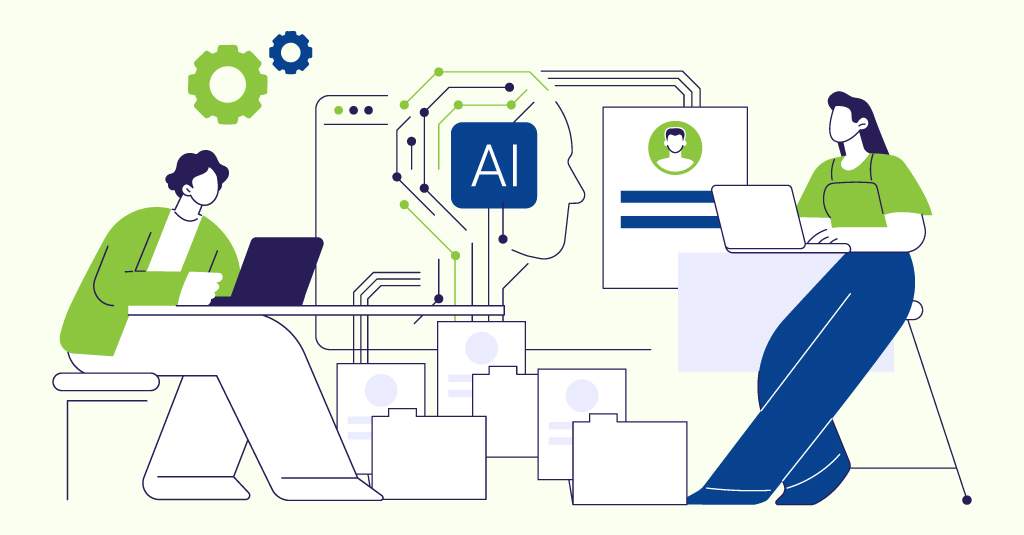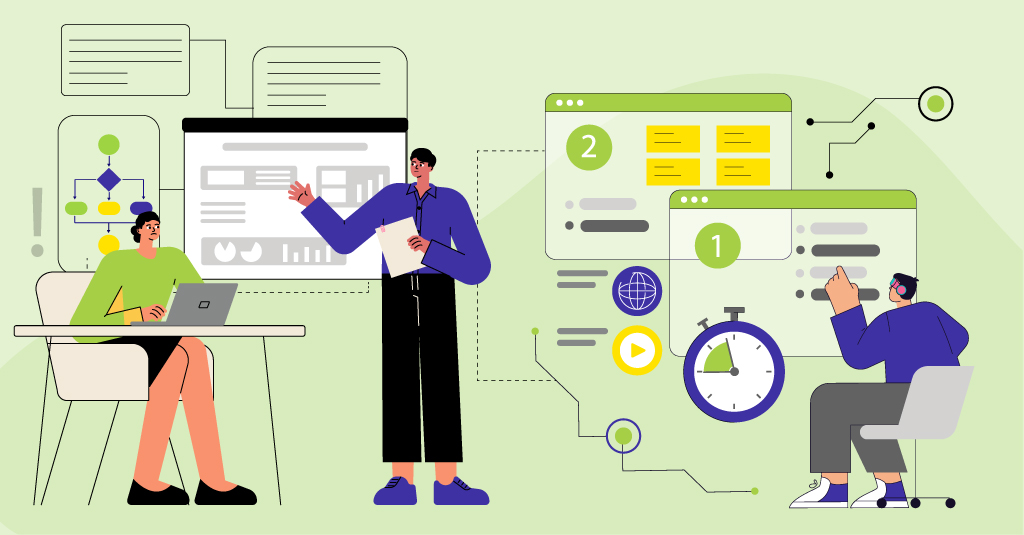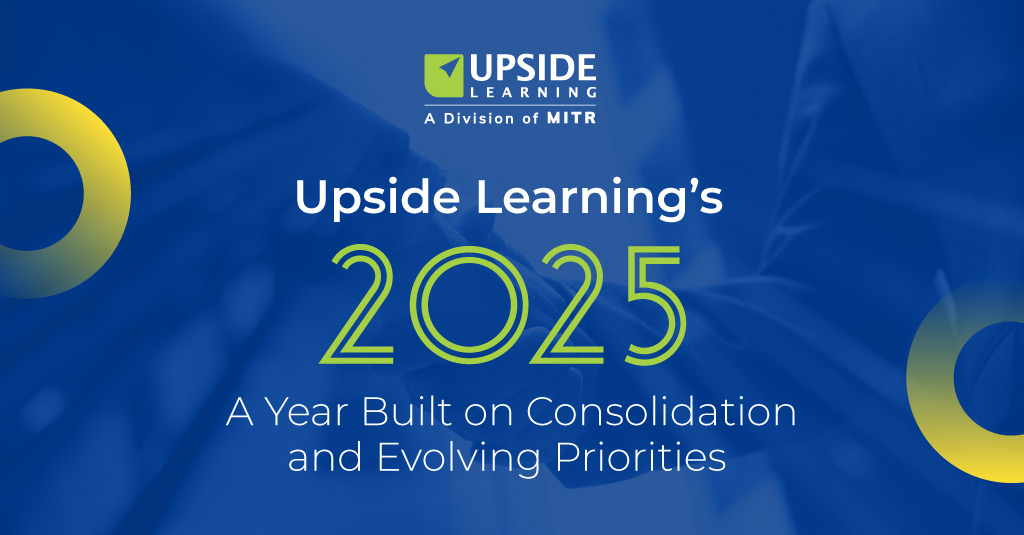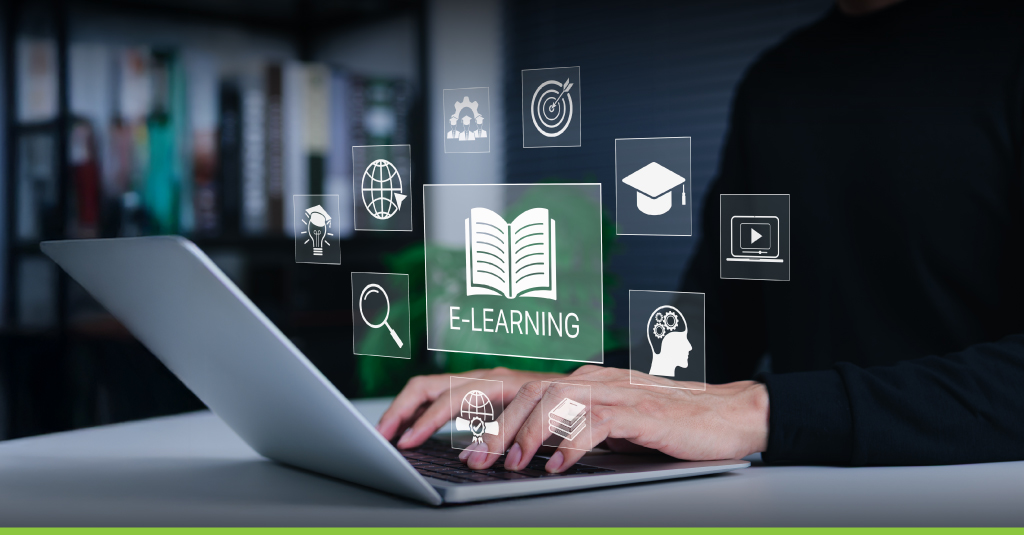
Why Skill Gap Analysis Is Having a Moment
Imagine being able to quickly identify 200 people worldwide who require leadership coaching, who are not data fluent, and who are prepared for stretch assignments. In 2025, this is both feasible and feasible thanks to AI-powered skill gap assessments.
With organizations under pressure to reskill and retain top talent, L&D teams are embracing AI to deliver precision-targeted learning. This blog examines how machine learning facilitates more accurate gap detection and the development of personalized eLearning modules on a large scale.

What Is AI-Powered Skill Gap Analysis?
AI-powered skill gap analysis is the process of comparing present employee abilities to the necessary competencies using machine learning algorithms. To uncover specific insights, it gathers and examines data from examinations, performance evaluations, LMS records, and even work items.
These observations guide the creation of individualized learning programs, guaranteeing that learners are exposed to material that is in line with their career responsibilities and areas of need for improvement. The outcome? Clearer business alignment, quicker skill learning, and more engagement.
By focusing on real performance gaps, businesses can enhance succession planning, foster employee growth, and create resilient teams prepared for the workplace of the future.

Why Traditional Training Misses the Mark
A one-size-fits-all strategy is frequently used in conventional training. Every learner is assumed to require the same material in the same format at the same time. The result of this is:
-
Content overload (Cognitive Load Theory)
-
Poor retention due to lack of relevance
-
Wasted budget on generic courses
-
Learner disengagement and low course completion rates
Traditional training also lacks agility. Legacy programs sometimes are unable to quickly adapt to new technology or changes in market expectations. This causes learning and performance to consistently lag.
Without accurate skill diagnostics, L&D teams risk misalignment between training investment and actual business needs, something organizations can no longer afford.

The Adaptive Learning Advantage
Now, let’s talk about adaptive learning, a system in which AI dynamically modifies information according to learner performance, preferences, and input.
Key features of Adaptive Learning include:
-
Real-time content recommendations based on skills gaps
-
Microlearning modules aligned with job-specific competencies
-
Branching scenarios for experiential learning (Kolb’s model)
-
Dual coding: blending visuals and text for better comprehension
-
Gamification elements to enhance motivation and mastery
Adaptive systems continuously evolve through feedback loops. Learners are nudged forward when ready, and supported when stuck, a SAM-friendly, agile design approach in action.
This approach doesn’t just support learning. It drives measurable business impact by ensuring that time spent learning is time well spent.

Building Custom eLearning Modules with AI
Here’s how AI transforms the traditional content development lifecycle:
-
Data Collection: Skills assessments, behavioral analytics, peer feedback, and performance metrics
-
Gap Mapping: ML models analyze discrepancies between actual and desired competencies
-
Module Assembly: AI curates, recommends, or generates content to fill specific gaps
-
Delivery Optimization: Learners receive content via their preferred formats (e.g., video, audio, interactive simulations)
-
Iteration and Feedback: Systems learn from user engagement to refine pathways and recommendations
Personalized, current, and relevant material is maintained by this ecosystem, which also frees up instructional designers to concentrate on important strategic and artistic choices.

Integrating with the Bigger Picture: LXP + LMS + AI
A single learning platform is no longer sufficient for modern enterprises. Rather, they function inside ecosystems that comprise skills clouds, talent marketplaces, traditional learning management systems (LMS), and learning experience platforms (LXPs).
These platforms are connected by AI-powered skill gap analysis, which provides data-driven insights that facilitate anything from career pathing to content suggestions.
For example, an employee who is assigned to a future leadership track may be given the following benefits automatically:
-
Peer-led scenario challenges
-
Personalized mentorship nudges
-
Curated external content from industry leaders
This integration supports a more holistic, self-directed, and high-impact learning experience.

Case in Point: AI in Action
A global SaaS company used AI to assess sales team competencies across regions. It discovered a consistent shortfall in negotiation skills. Instead of rolling out general sales training, the L&D team launched a focused program with:
-
Adaptive simulations tailored to product and region
-
Spaced repetition quizzes to reinforce concepts (Retrieval Practice)
-
Peer coaching and video practice loops for application
Result: a 22% improvement in deal-close rates and a 30% boost in learner satisfaction.
In a different healthcare example, AI-based gap analysis reduced clinical role onboarding time by 40% through pre-hire and post-hire targeted microlearning.
Common Pitfalls to Avoid
-
Over-reliance on AI: Human decision-making is not replaced by machines; rather, they are enhanced by it. Poor data = poor outputs.
-
Privacy blind spots: AI tools must comply with data protection laws (GDPR, HIPAA, etc.) and be transparent with learners.
-
Ignoring change management: New tech requires leadership alignment, stakeholder training, and cultural readiness.
-
Neglecting UX: A personalized learning path is only effective if the learner can navigate it easily.
Strategic design, governance, and ongoing assessment are necessary for successful implementation.

Smarter Training Starts with Smarter Data
AI-powered skill gap analysis shifts L&D from guesswork to precision. It empowers organizations to personalize at scale, retain talent, and prove ROI, not just with dashboards, but with actual performance gains.
Training in 2025 isn’t about promoting additional material. It involves choosing relevant content, proving its worth, and making it available to students when and when they need it.
This change is already being welcomed by forward-thinking L&D teams.

Looking to implement personalized, AI-driven learning at scale?
At Upside Learning, we help companies develop adaptable, customized eLearning programs that are informed by skill gap analyses and real-world performance statistics. Every step of our learning solutions, from strategy to design to implementation, is intended to have a measurable effect.
Let’s discuss how we may enhance your training’s efficacy, agility, and targeting. Get in touch with us to begin a discussion.
FAQs on AI-Powered Skill Gap Analysis & Adaptive Learning
AI-powered skill gap analysis uses machine learning to assess current employee competencies and identify areas that need development. It supports more targeted training interventions.
By analyzing learner behavior and performance, AI delivers adaptive content aligned to individual skill needs and learning preferences.
With rapid changes in technology and workforce demands, real-time skill visibility is essential for proactive upskilling and talent retention.
AI-based learning systems use machine learning, natural language processing, predictive analytics, and learning experience platforms (LXPs).
Not at all. AI assists with automation and personalization, but designers ensure the learning experience is relevant, ethical, and aligned with organizational goals.
Adaptive learning increases engagement, speeds up skill acquisition, and reduces time spent on irrelevant training content.
Yes, when using reputable platforms that comply with data regulations like GDPR and CCPA, with proper data encryption and governance.
Industries with rapid innovation cycles or strict compliance needs, like tech, healthcare, and finance, see the biggest gains.
Using models like Kirkpatrick’s and Phillips ROI, organizations assess impact via learner outcomes, performance metrics, and business KPIs.
Expect deeper personalization, real-time nudges, career pathing insights, and integration with on-the-job performance tools.
Citations



















